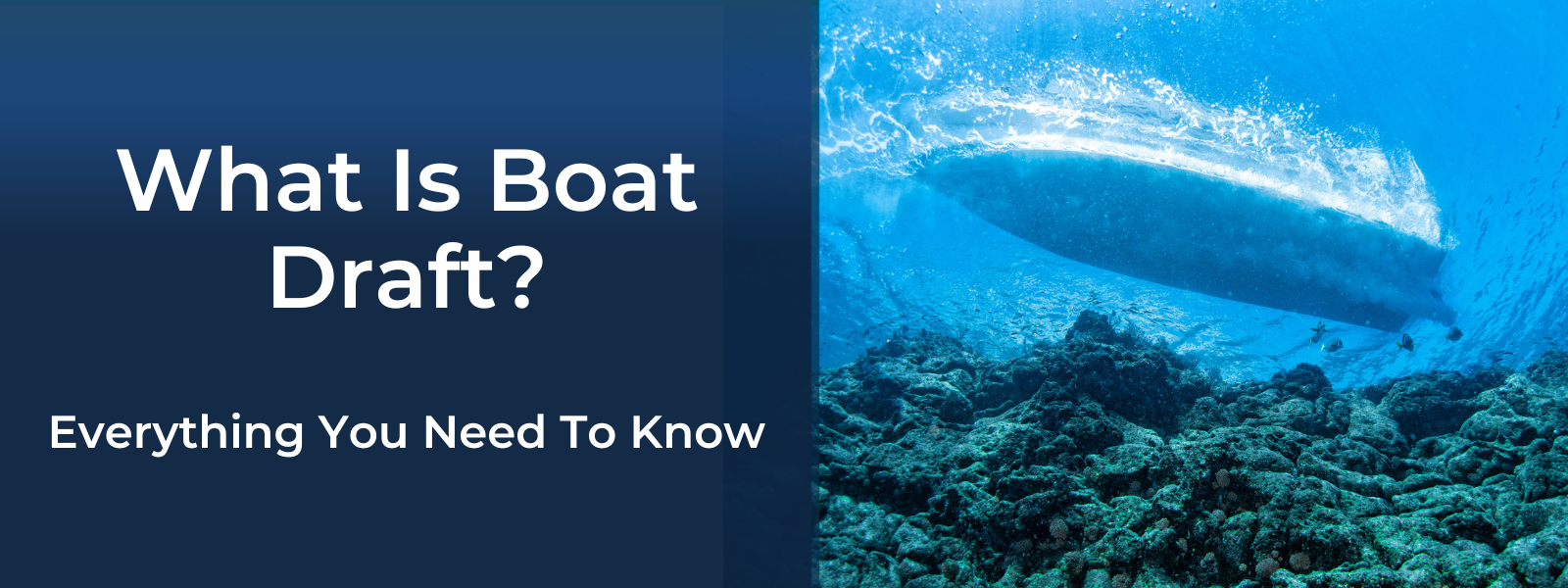What Is Draft On A Boat? Everything That You Need To Know About Boat Draft
What Is Draft On A Boat?
Boat draft is the depth from the water’s surface to the lowest point of a boat underwater. It’s like measuring how tall a person is, but instead, you’re measuring how deep a boat sits in the water. If a boat has a deeper draft, its lowest point sits deeper in the water. Having a shallow draft means its lowest point sits shallower in the water, which makes it better for navigating shallow waters.
Drafts for Different Engine Types
- Boat Draft For Inboard Engine Boats: For boats with engines inside them (inboard engines) or special inboard engines at the bottom (pod drives), we look at what sticks out the most under the boat, like the propeller or the rudder. These parts being under the boat make it sit deeper in the water.
- Boat Draft For Outboard and Sterndrive Boats: These boats have engines that can move up and down. So, there are two ways to measure how deep the boat goes: with the engine all the way down (“drive down”) and with the engine up (“drive up”). When the engine is up, the bottom of the boat (the keel) is the lowest part. But with the engine down, the part in front of the propeller (the skeg) is the lowest. This means you get two different numbers for how deep the boat can go.
- Boat Draft For Jet Drive Boats: Boats with jet drives are a bit different because all their moving parts are inside the boat, not hanging off the bottom. So, these boats only go as deep as the bottom of the boat itself. This makes them great for getting into shallow places without worrying about hitting something underwater.
How to Determine Your Boat’s Draft
You can find your boat’s draft in the owner’s manual or by measuring it yourself. To measure, find the waterline (where the boat sits in the water) and then measure straight down to the lowest point of the boat. Keep in mind, that the boat’s load affects the draft. More weight means a deeper draft. Additionally, a boat’s “running draft” (its draft when it’s moving) will almost always be lower than its static draft (which is the draft that is usually reported).
Why Knowing Your Boat’s Draft Matters
Understanding the draft of your boat is key for safe boating. It’s like knowing the height of a truck before going under a low bridge. You could hit the bottom if the water is too shallow for your boat’s draft. This is critical for navigating through shallow areas, rivers, and lakes, and deciding where you can safely anchor or dock.
Navigating Shallow Waters
A boat with a shallow draft is like a vehicle with good clearance; it can go places others can’t. It is also helpful to note that when a boat is moving quickly, it will temporarily rise higher above the waterline which lowers its draft. This is sometimes referred to as “running draft” and can allow boats to temporarily navigate water that would otherwise be too shallow. This practice is risky and should only be done by very experienced boaters. We recommend using a marine navigation app to ensure you avoid areas that are too shallow for your draft.
Frequently Asked Questions
Does a boat’s draft include the prop?
Yes, the draft includes everything below the waterline, including the propeller if it’s the lowest point. This is why knowing the exact draft, including the propeller, is crucial for avoiding underwater obstacles.
The maximum draft is the deepest your boat can be in the water, usually when it’s fully loaded. It’s important to know this to avoid places where your boat could bottom out.
Draft is the vertical distance from the waterline to the lowest part of the boat in the water. Depth refers to the overall height of the boat from the bottom to the top, regardless of how deep the boat sits in the water.
Refer to your boat’s manual for factory specifications or measure from the waterline to the lowest point of the hull. Remember, load and weight distribution can alter the draft.
Generally, flat-bottom boats, skiffs, and those with jet drive propulsion systems have the least draft, making them ideal for very shallow waters. Some boats have as little as 3-5 inches of draft, while most standard bay boats will have at least 10 inches of draft.
What is the difference between draft and freeboard?
While draft measures the depth of a boat below the water, freeboard is the distance of the boat’s side from the waterline to the upper deck. Freeboard refers to how much of the boat is above the water instead of below it.
What is considered a deep draft vessel?
Large ships, like cargo vessels and tankers, are considered deep draft vessels. They require deep water ports and careful navigation to avoid grounding.
How do you reduce the draft on a boat?
The easiest way to reduce a boat’s draft is to lighten its load. Less weight means a shallower draft. Boats with outboard engines can also tilt their engines up to temporarily reduce draft, and most boats can also temporarily reduce their draft by maintaining a certain speed.
How shallow can a boat go?
This depends on the specific boat and its draft. Generally, the shallower the draft, the less water depth you need to safely navigate without hitting the bottom. Some boats with extremely low draft can run in water that is less than 6 inches deep.
What Is The Draft On Sailboats?
Sailboats have a unique consideration when it comes to draft because of their keels. The keel is a large fin-like structure underneath the boat, and it’s crucial for stability and steering. Because of this keel, sailboats often have a deeper draft compared to many motorboats. This deep draft helps them to be stable in windy conditions and when they’re cutting through waves.
Conclusion
Knowing your boat’s draft and understanding how it affects your boating options opens up new possibilities and ensures safer adventures. Whether you’re cruising through open waters or exploring shallow inlets, keeping your draft in mind helps you steer clear of trouble and enjoy your time on the water. New to boating? Check out this article on how to drive a boat next!










